Feature: The many layers to Surf Lakes’ stone-in-a-pond concept
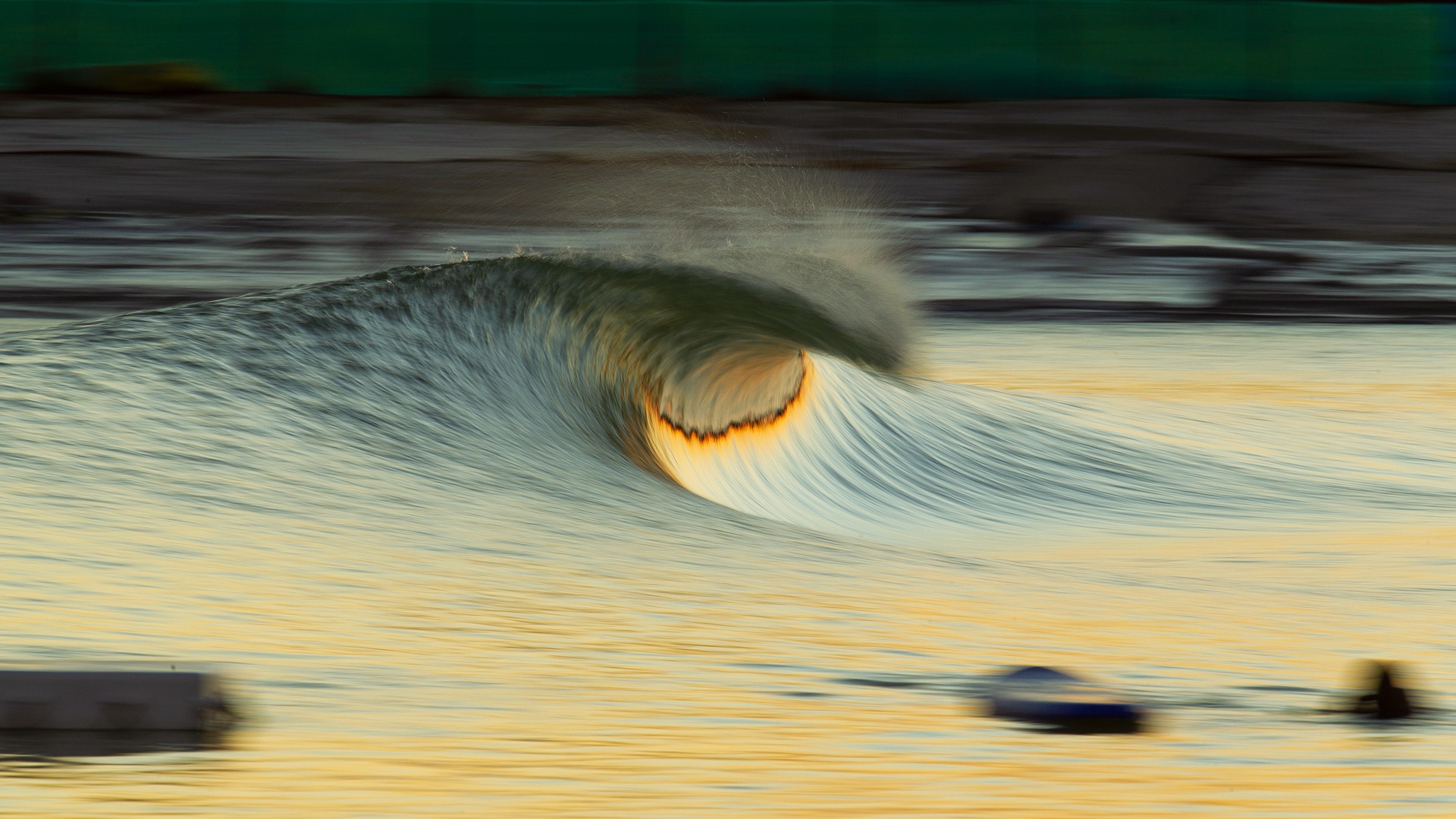
The test pool in Yeppoon is known by a lot of names: The Mad Max Wave, The Plunger Wave, Apocalypse Wave, That Giant Donut Thing …
Surf Lakes makes a huge visceral impression. Arguably more than any wave technology out there at the moment. While concrete and software-synced air-powered swimming pools become the Dave Mathews Band of the surf park landscape, Surf Lakes’ giant wavemaker shocks, awes and impresses as few can. It’s big. It’s loud. It’s the AC/DC of wave pools.
There is something so wonderfully simple about it. You don’t need an engineering degree to get how it works. Anyone who has tossed a rock into still water and watched the ripples fan out comprehends the Surf Lakes system. Mix in elementary bathymetry knowledge and each one of us believes we could design such a machine. But we can’t.
While the Surf Lakes wave pool looks simple, it’s really intricate in design. The distance and speed at which the plunger falls greatly affect the waves. Subtle tweaks to the angle and slope of each break’s bottom contour have huge repercussions to the surf. Now, try to craft each wave so that it stays true to its brand within the 5Waves system (Occy’s Peak, The Island, etc.) and you can see the challenges the crew at Surf Lakes face. It’s a much more complicated coordination than most imagine.
We were fortunate enough to sit down with Founder Aaron Trevis and Sales Manager Wayne Dart. The two opened up and spilled a few details about the system, their journey, and some exciting new developments. Along the way, we learned that this big-rock approach to wave-making has many delicate layers.
You set Instagram on fire with the world’s biggest wave pool surf. What technically have you changed since we last heard from you?
Aaron: The liner needed to be reworked. I think we’ve explained before that we only just put a very basic cheap crust of liner in to get us to ready for that very first test knowing that it would eventually have to be replaced. And so we reached the point where it needed to be replaced and then we took the opportunity to make some bathymetry variations and improvements. We’re very pleased with that because there are lots of different ways to line wave tools, but there’s a lot of expensive ways to do it too. And we’re trying to find a balance between effectiveness, flexibility and a cost-effective solution. So we believe we’ve found that balance. So that was a key thing for this stage of the testing. And then again, more refinements to the wave. The beachbreak now works marvelously. It’s exactly how we wanted it in the first place. And then the machine. Kit, the lead design engineer, has been working with the machine making some changes to the valves and more to optimize the tuning. That’s really where we’re at now, just optimizing the machine and trying to make it more efficient, more effective.
Surf Lakes is huge. Could you share with us what it was that made you want to go so big when you designed it?
Aaron: There were a couple of things to that strategy. One, we didn’t think it would cost as much as it did. So I was naive. Also, we weren’t the first technology. We knew that there were wave pools already out in the market. So we needed to make a statement on the wave size and, you know, just the genuine possibilities of what can be done with a decent size surf park like all the amenities and lifestyle additions that can be wrapped around it. So, yeah, we had to go out and do something a little different. That’s the way we viewed it strategically. And what we also realized for the longterm is that having built it at the full size, it then reduces the risk for the licensee. So if we want to build a compact model, which we are doing now, it’s much easier to scale back. And so whilst it’s been expensive and painful for us in the long term, we believe it was the right decision.
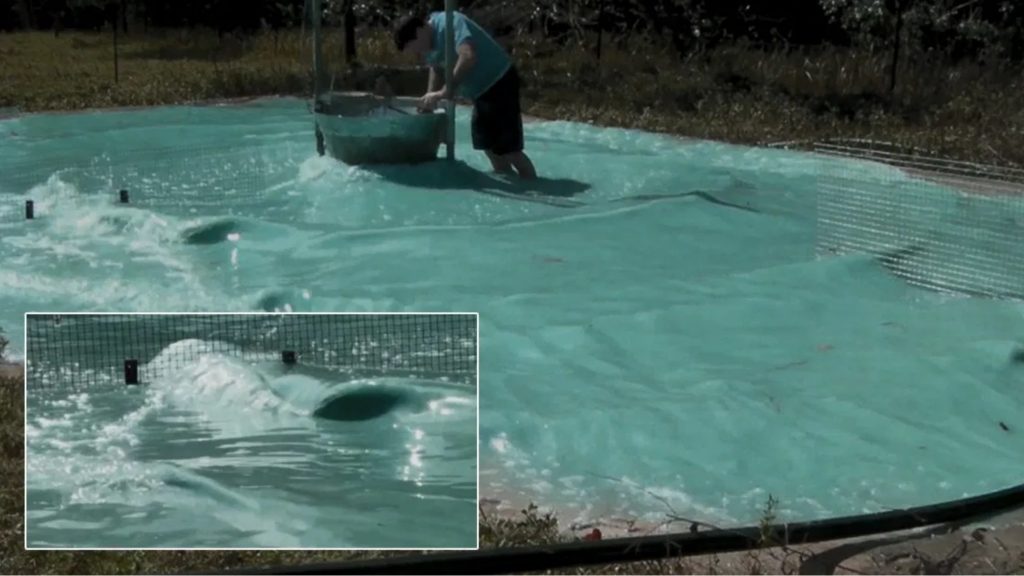
So Yeppoon was the first shot?
Wayne: There were smaller-scale prototypes that gave the team the confidence to construct the full-sized one. And if you look at the timeline from concept to potential commercial reality, we’ve tried to compress everything down to five years, whereas the other wave pool makers have had 10 to 15 years to do that. The confidence gained by having those smaller models allowed us to actually build this big one and move forward. What we’re creating is just game-changing. And when you see it first hand, video doesn’t do it justice, you cannot describe how awesome the whole thing is. But it wouldn’t have been possible unless we’d obviously done the smaller models.
And now you’re scaling back down a bit?
Aaron: So we’ve got the full size 5 Waves model and then the new compact model, which we will be releasing very soon. It’s a scaled-down version, so you don’t get quite the same choice in wave levels. It’s more about the intermediate and lower market with advanced waves. And so whilst you don’t create such an incredible surf destination as the full size 5 Waves, there’s a lot of locations where, you know, it’s learning to swim before you learn to surf. And then it is really just about family fun and entertainment. They’re not necessarily looking at it as a surf destination as such, but it can still be an incredible surf experience. So they’re really the two extremes if you like. And I think there are even shopping centres that want to create a mini version from that again, which we can explore as well. But the main thrust is the 5 Waves model and then the Surf Lake model, which will be more compact for about two-thirds of the price.
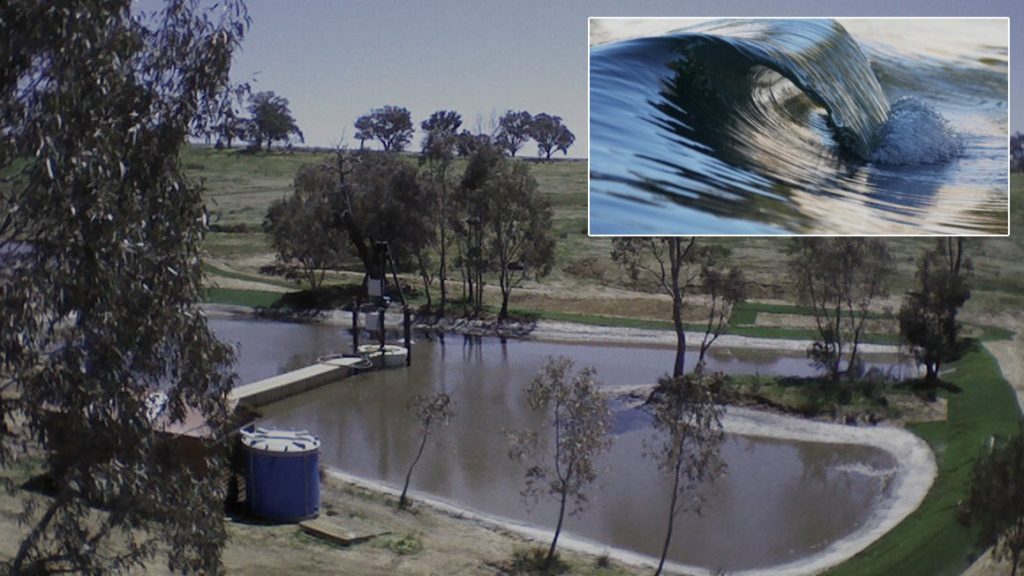
Can you share any upcoming announcements?
Yeah, we can share where we’re able. I mean we’ve got the UK, and you’ve got SurfX in the Midlands and in Bournemouth where we are pressing ahead with projects. It’s just approval time frames now, which is the hurdle for them. They’re still seeking some funding, but the main barriers are just getting through the approval process. But they’re doing really well and we can’t wait to see those to crank through. And then we’ve got the Surf Lakes SoCal, and that’s in the Orange County area with Drew and Eddie. They’ve been settling on a particular location. That will be big. It will be an incredible project. We can’t give the exact timeframe for waves, but they are super determined and capable and well-connected. That one is going to be a real showpiece I believe. There are others across the US as well, and there’s a couple of other territory agreements and there’s another licence which we will share more about when we can.
And in Australia?
Ok, and then Australia, we’ve got the one that we want to build on the Gold Coast, and that’s progressing. And yeah, that gets exciting, you know. So and there are others throughout Australia which are in various stages of consideration, you know. One in particular, which we can’t talk about yet, but it’s a major initiative in a city for a whole redevelopment of an area. So, yeah, we’re inspired by some of the projects. We always thought we were big thinkers but then you meet some of the developers who get involved with these projects and they lift you to another level. So it’s great fun.
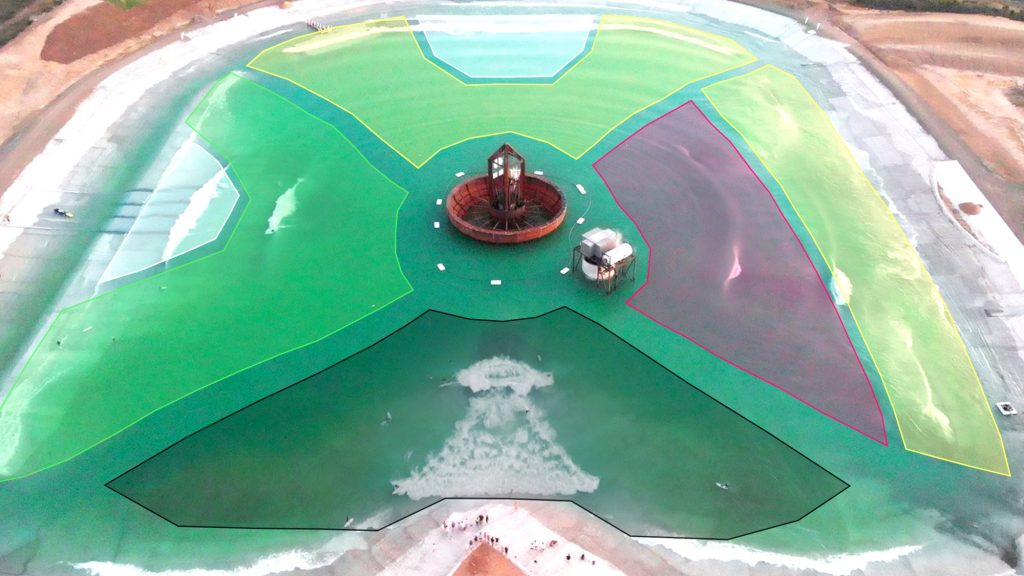
So how does it work with licensees? If I approach you with sufficient funds can I be the surf licensee for, say, France?
Aaron: Typically, it’s a smaller area, it might be a city or a state rather than the whole country, but there are obviously small countries in Europe that it makes sense to license out the whole country. So it’s not really by geographic region, it’s by project. We wouldn’t just license all of California, you know, there can be multiple projects throughout that state and same goes for Texas and Florida and other countries like Australia. You wouldn’t just have one license for a big country like Australia. Well, you would if you were prepared to pay enough. And I guess that’s the thing is it depends really on the passion and level of expectation of the licensee as to what they want to have exclusively. So we’re prepared to consider bigger areas for people who are prepared to pay for that and demonstrate that they can deliver multiple projects. It’s really analysis. It’s getting to know those people because we actually will be tied in with the project for 25 years and monitoring and auditing that project. So we have a request for proposal process that Wayne has put together with the team to allow us to conduct due diligence on the licensees whilst they conduct due diligence on us. And so once we’re all happy that we’ve got an aligned value set. Some people have very capable developers but don’t really want to operate the surf park. They just love the amenity and they want to develop 2000 apartments or whatever it is around the wave pool and have someone else operate it. That’s still valid in our mind because we can find operators or even develop our operations capacity for that. Then there are others who just want to have a wonderful surf resort that they operate themselves.
What are some of the scenarios that could work with your wave pool system?
Wayne: So you might have one experience that’s open 24/7 to the public and it’s mums and kids. And it’s a rush-rush type scenario, something similar to a public swimming pool. But you also might have at the other end a camping type scenario where it’s people going on a surf trip and just, you know, enjoying a casual country experience. You can also have an exclusive experience, which would sit in the middle of a high-end residential or gated community, which is only open to those people that are living in that particular space. So there’s several different experiences that we can offer and that comes back down to the sheer size of the full scale 5 Waves model. Having such an obviously fantastic perimeter to work with, which certainly separates us from the square-on-all-sides wave pools.
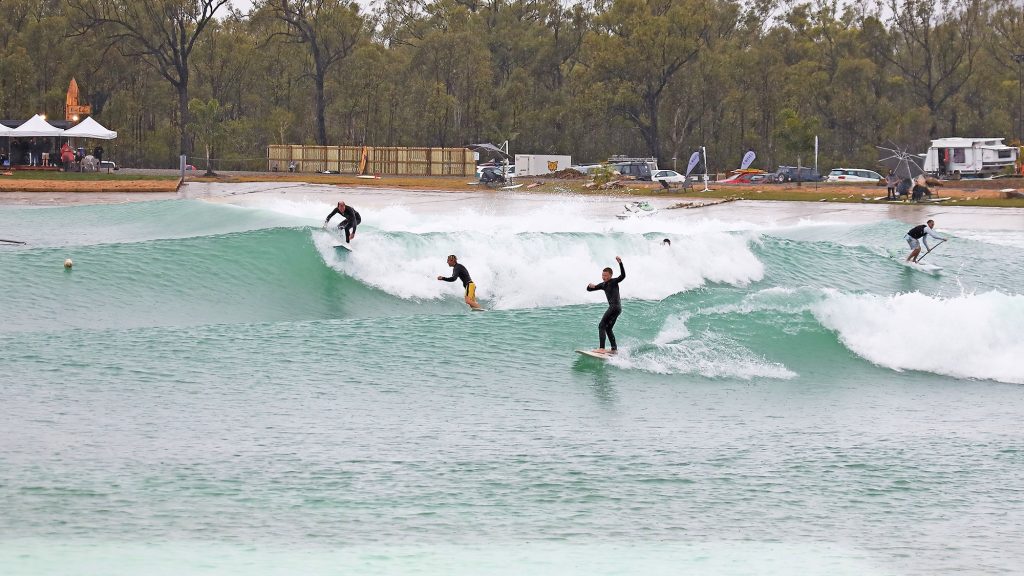
And scaling up or down fits well with these scenarios I’d imagine
Aaron: We recognized before, some clients want that big full experience and others who want a more compact, space-efficient option. And so we can do both. We’re responding to that need where some people are more price-conscious and space-conscious, and we can cater for that pretty well. So, you know, we have the Under $20Million model and this is the under $30Million model for the big one – ballpark figures. So if you look at the two-hectare compact model, which is similar to a Wavegarden Cove, you know, it’ll come in hopefully under that price. But you get the equivalent of four surf parks in one. So the value is incredible.
At some point in the arc of wave pool development, someone is going to want to outdo their competitors to boast that they have the “world’s biggest wave pool in the world.”
Aaron: That’s it. Yeah. And for us, there’s an efficiency in what we can create. We can create larger waves from the outset with 5 Waves. I mean, what we’re seeing at the moment is 4.3-meter stroke height out of the design that can go to 6 meters. So we’re having overhead barrels at 4.3-meter stroke already. So on just the same model we have, we can run that at a 6-meter major stroke, which is just a tuning thing for the engineers. And the commercial model will definitely do that. That will be enough for most people. It’s more than enough all right.
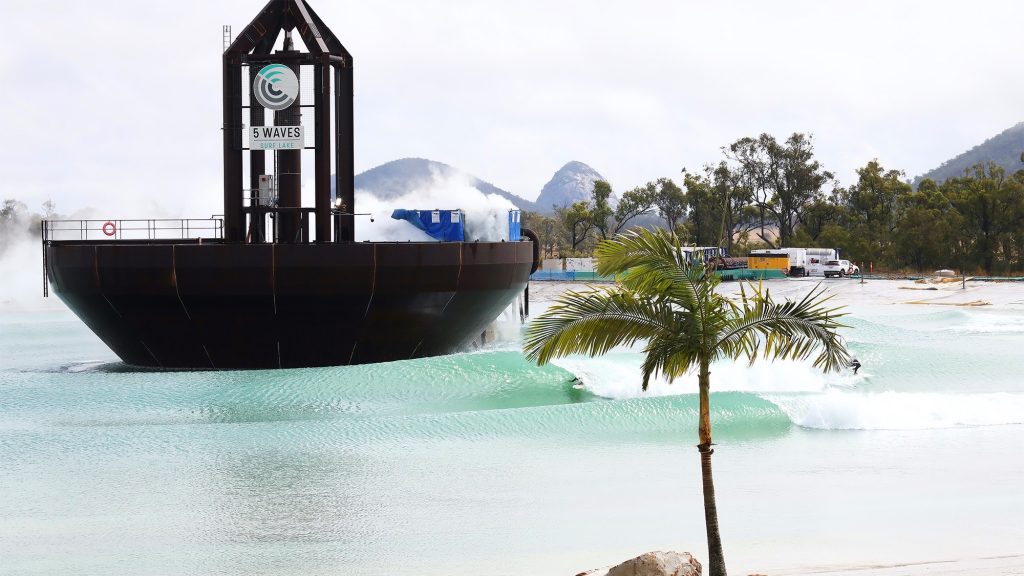
When you say stroke capacity, that’s how high you lift up the giant donut wavemaker?
Aaron: Yeah, that’s right, it’s the full oscillation of the up and down combination.
Wayne: One of the things that we’ve seen and we’re talking about the stroke height as well is that we can provide more variety in the wave shape through changing the speed in which the actual mechanism drops. What we can do is create a more realistic ocean experience because every wave is different. So while we can create potentially bigger waves, we can create waves specifically for certain events and so forth. We can change the nature of that wave regardless of the shape of the bathymetry, just through changes in the Central Wave Making Device or CWD (the giant donut.)
So the speed at which the plunger drops affects the type of wave created?
Wayne: Yes, absolutely. Ben (Player) and I were sitting out there before Christmas and we would get a message from the head engineer that would say, “oh, that was a 3.8 ministroke.” And we would be thinking, “wow, that wave was way different to the last 3.8 ministroke” and we couldn’t work out why. And it was staring us right in the face, literally. Because the machine was dropping slower than it was previously, which therefore changed the whole nature of the wave. It wasn’t a big Hawai’ian thump. It was more like Indonesian perfection. It was the same size wave, but it just didn’t have that same thump. We were able to play with creating different barrels that are more refined. And then again, in changing the weight of the actual mechanism that changes it all again as well. There are so many variables that we can use to recreate that ocean experience. We’re not trying to recreate the ocean exactly, but we’re getting pretty close.
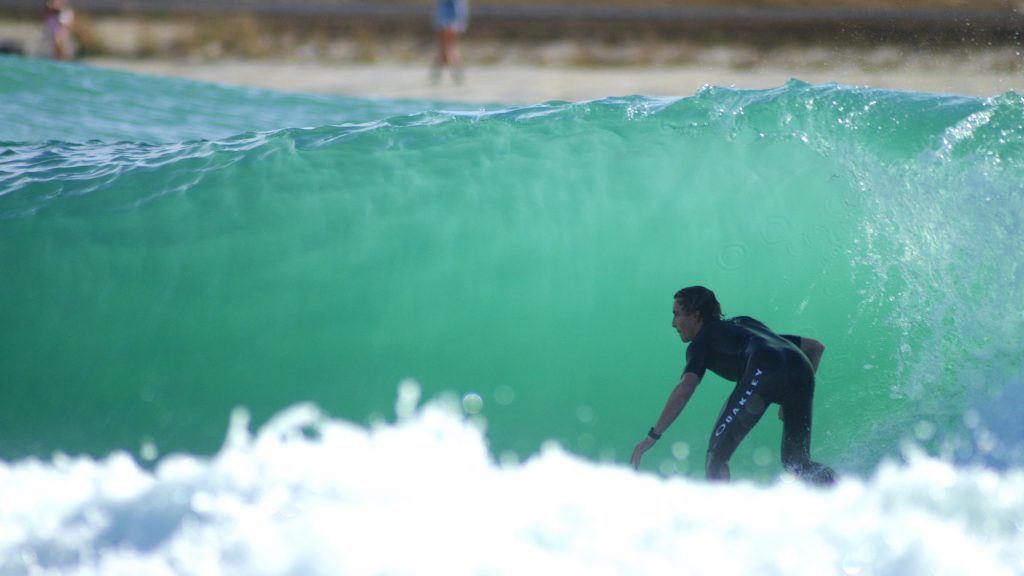
I never realized that you could change the velocity and the weight of the CWD and change the waves. That’s cool.
Wayne: And I can’t explain how cool that realisation was, but when we understood it Ben player and I had like these massive brain explosions were just going on, “wow! That was unreal!”
Aaron: Yes, there’s a lot more changeability than we originally realized. And so as we learn and refine that, we’ll be able to dial that up as required. And there’s immense variety there already. But then machine tuning just adds even further variety to it. So they’re all perfect, but they can be slightly different. So as Wayne said, it is incredibly close to an ocean experience.
Ok, and the other thing that I want to ask you directly is to to build the central tower, you need to dig about 100 feet (30 meters). Is that right?
Aaron:
No, not at all. It’s 13 metres (43 feet). The compact model will be less than that.
Are that depth and the risk of hitting more things underground, like a water table, a detriment to building a project?
Aaron: It can be, it can be in some cases. If you’ve got a high water table, you will be digging through it anyway. To dig further through creates further risk. So there will be some locations where, for whatever reason, you’re not allowed to do that or there’ll be a height restriction. So we won’t win every project, but we certainly don’t want to win every project in the world. I’ve always said it’s a wave pool puzzle. People have to figure out which part of the puzzle they’re fitting into their site.
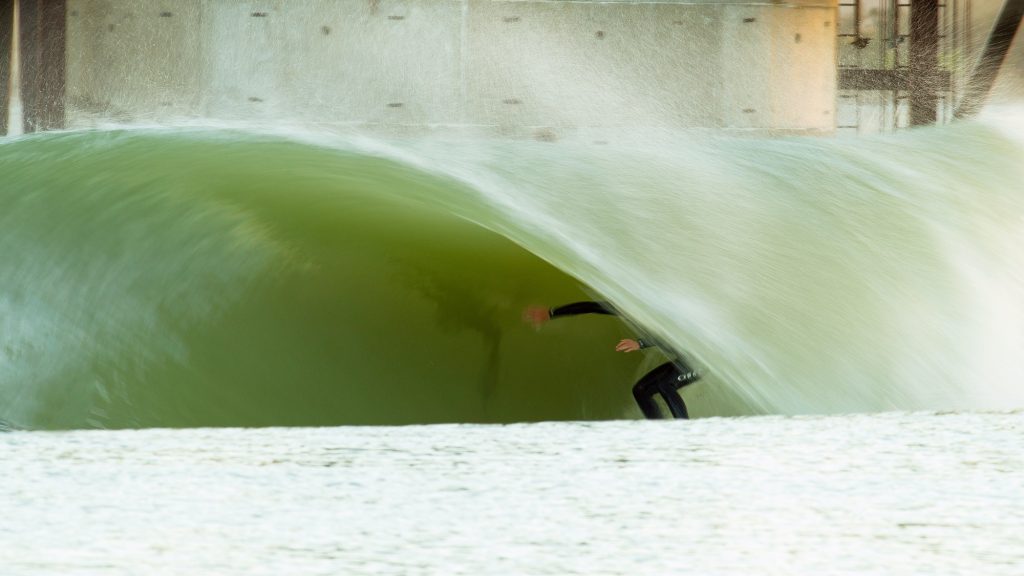
Ok, and I know a while ago you had some artist redesigns of the Central Wavemaking Device, which is a mouthful to say by the way…
Wayne: Yeah, we just nicknamed it Bob. You have to do that because yeah it is a mouthful to say that. Occy even paddled up to it to worship it and then wrote “We Love Bob” on the side it.
Is that design pretty much going to stay where it is or you guys have some new insights, some new data that would change the shape of the CWD, or Bob?
Aaron: Yeah, there’s basically opportunities for refinement, but certainly it can be shorter on the tower than it is now. So the engineers were obviously being cautious for the first one, making it big. So the CWD can be shorter. There’s finesse in the structural design of that. And there are also some other improvements we can make with the second tower. So we’ve got a lot of research that we want to do to improve. But the base formula is there now. We’ve built it. We know we trust it. So it will be implemented in the commercial versions of what we have.
Surfrider Europe just denounced wave pools. What about sustainability?
Aaron: You know, energy use is an obvious one where we can utilize renewable energy and study that further. And so we’re partnering with groups who can provide alternatives whether it’s solar or wind or tidal power and there is a lot of work to be done in finding and capturing that. And then there’s energy from waste, which we have a partner firm that we’re discussing options there where we can create a fully circular economy around the facility. So for us, it’s really just being deliberate in those choices. It’s a very busy space and there’s a lot of options out there already. So it’s not like we have to reinvent anything there, thankfully, because we’ve got enough inventing that we’ve been doing. So it’s just really about making deliberate choices and trying to embed that culture into the DNA for our licensees as well and, you know, pinning our brand to it a little more strongly so that if we have a choice to do X or Y, then we’ll take the one which is better for people on the planet.
Wayne: And to add to that, if we’re looking at the people that we’re employing in the facility, we want to make sure that they’re not just a fly-by-night operation which can be typical of the action sports industry. So instructing snow, instructing surf whatever you’re sort of looking at transient people that are moving through and just stay for a good time. And I guess it comes back to, as Aaron was saying before, it’s like we’re building it into our DNA. We’re not just saying it. We are doing it. And we are having discussions with those potential partners and so forth in that space to ensure that when we do build our first commercial model, we’re actually yeah, we’re starting and we’re kicking off with the Big Bang.
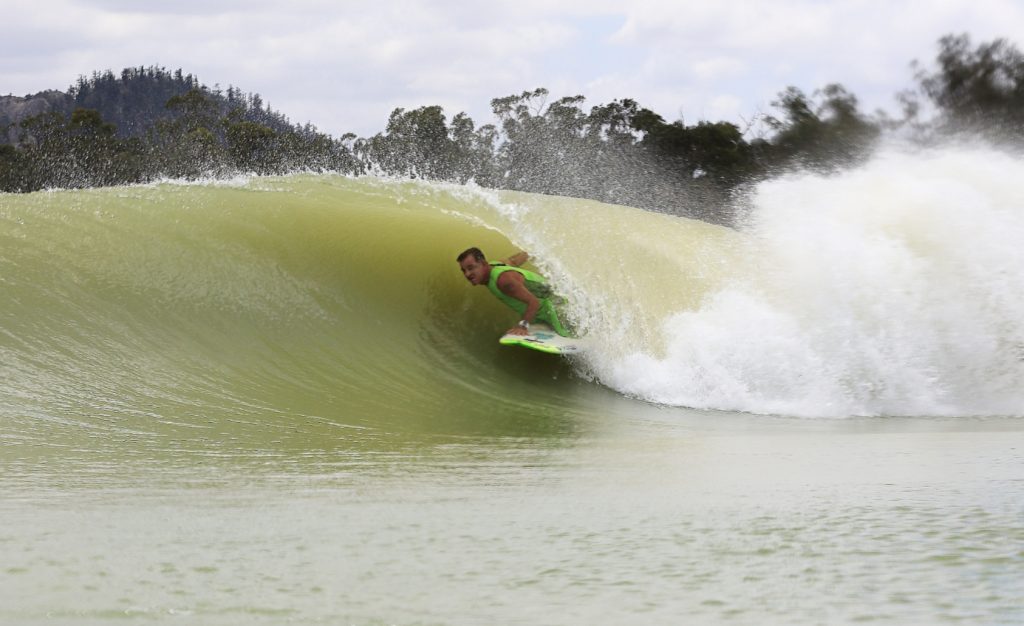
You produce more waves with each plunge, but each plunge must be very energy-intensive.
Aaron: We produce nearly 10 rides per plunge and the goal is to get it down under one-kilowatt hour per ride. So the prototype is not there yet, but the commercial projects have the potential to do that. So that’s our goal.
Anything else you want to add?
Wayne: Surf Lakes has genuine passion and love behind it. It’s not simply focused on the bottom line, even though we obviously need to make money around us, but at the end of the day, it’s because there’s a genuine love for the sport and a genuine love for people. And that goes back to the battles that we’ve had. You know we’ve all been on the side of the lake together when the machine broke down and we shared that. We’ve got a lady here, Jackie, who’s living out here at the moment. She’s the site manager and she’s put her whole heart and soul and her whole family, like the kids, basically to work doing landscaping. Her husband stayed in a caravan and was security for a long time. Do you know what I mean? It’s real people, little people trying to create something that’s big. And Aaron’s created something totally unique and it’ll change the world, not just from a technology perspective, but the love and the warmth and the and the focus on change for the positive.
Related Coverage
